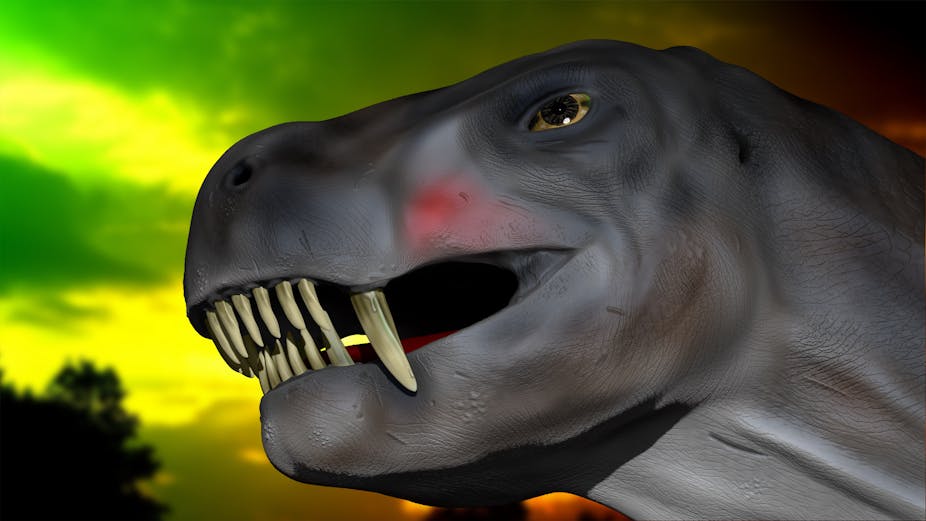Baron Franz Nopcsa is a particularly colourful figure in the history of palaeontology. He was an Austro-Hungarian aristocrat who discovered and identified a number of dinosaurs and other fossils around the world. In 1933, during a trip to South Africa, he looked at the remains of a therapsid found a couple of years earlier by Robert Broom, a pre-mammalian relative called Euchambersia.
Nopcsa declared that this was probably the earliest venomous species ever recorded. But his theory couldn’t be confirmed or disproved because venom and venom glands don’t fossilise. That’s where technology comes in. I was part of a team at Johannesburg’s University of the Witwatersrand that collaborated with London’s Natural History Museum to test Nopcsa’s theory using CT scanning and 3D imaging techniques.
The results? Nopcsa was right, and at 255 million years old, Euchambersia is officially the oldest venomous animal that ever roamed the Earth.
Even more intriguing is that Euchambersia is related to early mammals, not to snakes (which is probably the creature you think of when it comes to venom). Actually, many existing mammals produce venom: among them shrews, some primates and the weird Australian Platypus. Numerous scientists have hypothesised that mammals were all venomous in the distant past but lost their venom producing glands along the way.
So how did we discover the truth about Euchambersia?
Uncovering Euchambersia’s secrets
Broom’s find is one of only two Euchambersia specimens ever discovered. Both were discovered in the same area, near the town of Colesberg in South Africa. One is kept at the Natural History Museum in London; the other at the Evolutionary Studies Institute in Johannesburg.
Each specimen was CT scanned at its respective institute, and the London data was sent to my colleagues and I in Johannesburg. CT scanning is a cutting edge technique that resembles medical imaging. It allows scientists to observe and “dissect” fossils digitally using computer software. Thanks to this technique, we can produce 3D models of previously unreachable internal structures.
With these virtual images of the internal anatomy of the only two known specimens of Euchambersia, we had in hand the most comprehensive dataset about this species that’s ever been gathered.
Analysing them, we made several fascinating discoveries. It emerged that Euchambersia had anatomical adaptations which were compatible with venom production.
First, there was a wide, deep and circular depression in the skull for a venom gland on the upper jaw. This was connected to the canine teeth and the mouth by a fine network of bony tubes and furrows. We also discovered previously undescribed teeth hidden in the vicinity of the bones and sediment that filled the skull. As is usual for fossils, the skull is filled with sediment and some teeth were preserved inside this sediment but hadn’t been spotted before. These were two incisors with preserved crowns and a pair of large canines, all ornamented with a sharp ridge.
A ridged dentition like this would have helped Euchambersia to inject venom into its prey. Pre-mammalian therapsids dominated terrestrial ecosystems well before dinosaurs even appeared. They diversified as herbivores and carnivores, large and small, burrowing and ground-dwelling species. As the earliest venomous species and a representative of this early wave of pioneering species, Euchambersia directly reflects the extraordinary adaptive capabilities of these mammalian forerunners.
In addition, since mammals might have been primitively venomous, Euchambersia would be one of the last remnant of this distant and toxic ancestry of ours.

